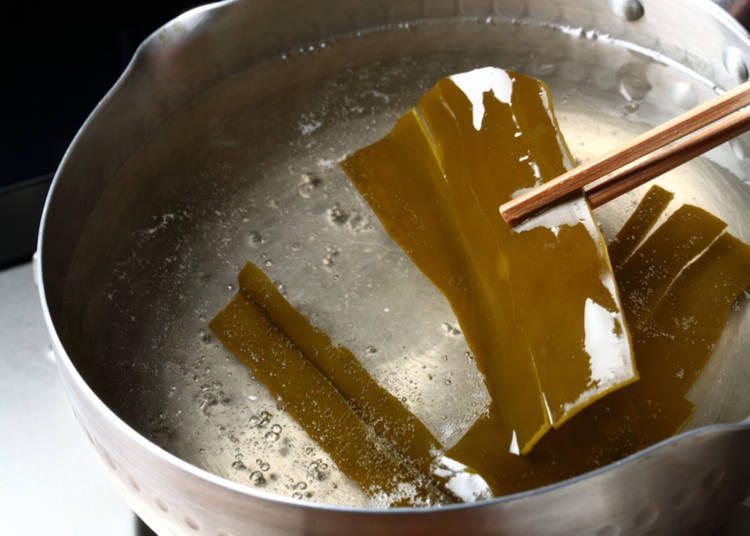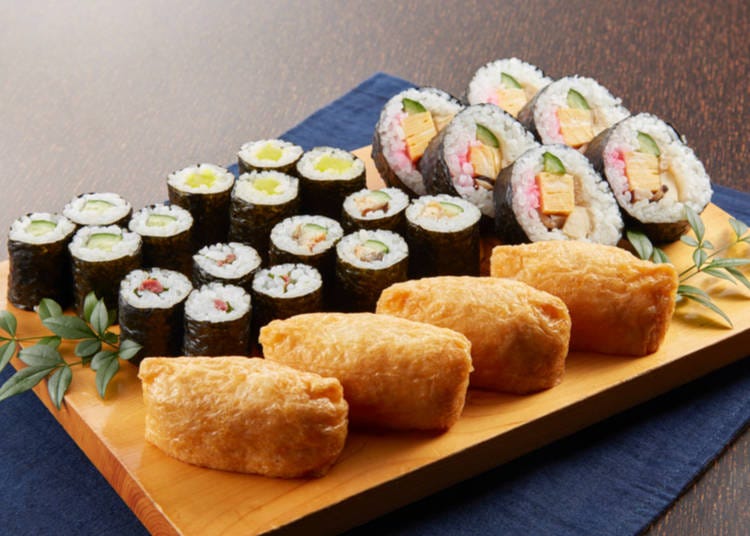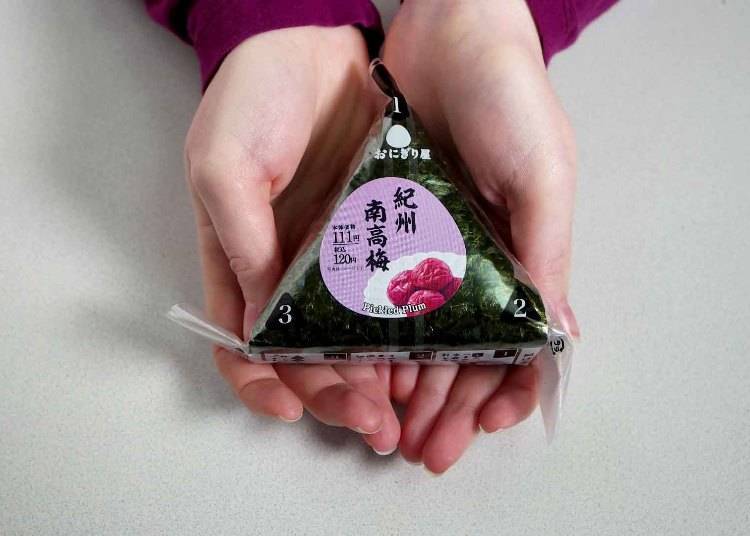
Japanese cuisine has spread around the world rapidly in recent years, its image shifting from being an exotic raw fish centered cuisine to being featured on order-in menus in all the major metropolitans in the world. Proven combinations, traditional ingredients, and precision-driven techniques have put Japanese food on the map, with more than 100,000 restaurants in Tokyo alone feeding millions of hungry mouths each day.
As a vegetarian on an island where the concept of a diet without meat or fish is uncommon, the task of finding a fulfilling and delicious meal can be daunting. The recent influx of tourists has brought a wave of vegetarian and veganism to the cities of Japan. Cafes are opening to cater to this new demographic and some places are even modifying old Japanese recipes to fill this new need. And with a little guidance, Japan can still be a culinary paradise for all the vegetarians out there!
1. Dashi: Base for many Japanese foods; bane for vegetarians

Probably the most important ingredient for a vegetarian in Japan to understand. Dashi is a flavorful broth used in a lot of Japanese cooking, from miso soup to various noodle broths. It is made by bringing water containing kombu (kelp) and/or shavings of katsuobushi (bonito flakes) to a simmer and then straining it out. The strained liquid becomes dashi, an umami-rich broth. Despite using fish flakes in the preparation of the broth (which is eventually strained out), dashi does not have a fishy taste. This means that this clear broth is often overlooked by vegetarians.
Miso soup contains fish?!
It’s safe to assume miso soup, noodle broths, dipping sauces, and many other simmered dishes contain dashi to add an extra layer of depth to the dish.
Some expats have made an exception for this broth as it is base of most Japanese cooking, but many do their best to avoid it. It is always best to ask if you are unsure.
Useful Japanese phrases
-Kono ryori ni dashi o tsukatte masu ka?
Is there dashi in this food?
-Katsuo dashi o tsukattemasuka? Konbu dashi o tsukattemasuka?
Does this have bonito (fish) dashi? Or seaweed dashi?
2. Japanese food for vegetarians

Japan offers a vast array of delicacies – many of which are actually vegetarian. Even before the advent of vegan ramen, vegetarians still had options. Here are a few Japanese dishes for vegetarians to try.
Shojin ryori is a Zen Buddhist vegetarian food. Originally eaten by Buddhist monks and brought to Japan from China with the spread of Buddhism, this meal focuses on balance, fresh ingredients, and healthy eating. The monks believed that killing animals clouded their spirit, which is something that resonates with my people how have consciously converted to vegetarianism. Shojin ryori is a meal made without meat, fish or other animal products. To create balance the dish has elements of sweet, sour, bitter, salty and umami, avoiding bold flavors like garlic that have a tenancy to overpower a dish, eating shoijn ryori, especially in a temple can be internally cleansing and quite a culinary delight.
Option number two is Tempura, a Japanese dish with seafood and vegetables that have been battered and deep fried - a universally known to leave people with full bellies and smiles. Almost all tempura restaurants have a vegetarian set on the menu, featuring an array of different local vegetables such as mushrooms, eggplant, potato, asparagus etc. Tempura is usually served with a side of miso soup (which unless specifically mentioned contains dashi), and sometimes on top of a bowl of steaming hot Japanese rice.
Kushiage is a close cousin of tempura and is another dish of deep-fried vegetables, however, these vegetables are coated in a different and slightly thicker batter and are served on skewers, there are different dipping sauces paired with different vegetable skewers.
When it comes to noodles, zaru soba (cold soba) is the safest option. Zaru soba are buckwheat noodles served cold on top of a bamboo tray with a tsuyu dipping sauce (note however that unless specifically mentioned, tsuyu dipping sauce most likely contains a dashi).
If dashi is not a problem that opens many doors, a simple breakfast of Miso soup and rice or Udon noodles – a thicker buckwheat noodle which are most commonly served in a hot broth (typically containing dashi) also get the green light. Udon noodles come with various toppings some meat and fish but there is always one which is simply grated radish with a lemon wedge on top of the noodles.
When going drinking with friends in local Japanese bars called Izakayas it’s always good to remember that edamame (green soybean still in the pods) pairs perfectly with a Japanese beer and that the appetizer menu is your best friend – it filled small veggie dishes! Try some kimchi or freshly cut cucumber with a miso dip, even a small plate of pickled radishes and cucumbers. Tofu is almost always on the menu, but tread carefully here because cold tofu typically comes with fish flakes on top (which can either be removed by a fish-flake eating friend or asked to not be put on top when you order) and deep-fried tofu comes in a dashi broth.
3. Sushi for vegetarians in Japan

Sushi is one of Japans most popular dishes, available for 150yen a dish to a 30,000yen omakase meal at a three Michelin star restaurant. A plate of sushi not only satisfies the taste buds but also demonstrates the importance of knife skills, hand techniques, and fresh ingredients. It is a great way to understand one of Japan’s core values - complexity comes from simplicity. Basically, it’s a good food.
At high-end sushi restaurants, it becomes difficult to get a full vegetarian meal, especially those establishments that have pre-set menus.
However, the small – yet still delicious - sushi joints, where you can order off the menu have quite a few vegetarian options.
・Kappa maki is a cucumber roll with seaweed on the outside.
・Kampyo maki is a dried gourd marinated in soy sauce and sugar, enclosed in rice which is wrapped with seaweed.
・Takuan maki has pickled sun-dried radish as the filling.
・Inarizushi is rice inside a pocket of tofu skin. Inarizushi can be quite sweet and works well at the end of a meal. Sometimes the rice filling inside comes with sesame, edamame or pickled plum.
・Ume shiso maki is a sushi roll made of pickled plum and shiso leaves, sometimes even a cucumber in the center.
・Natto maki has fermented soybeans as the center filling of the rice. The texture of natto is unique and slightly sticky, but the fermented soybeans have great health benefits.
・Tamago nigiri sushi is a folded omelet served on top of rice and neatly wrapped with a thin strip of seaweed.
Many local sushi restaurants use pictures on their menu, and the good thing with sushi is what you see is what you get so always have a browse.
4. You can find vegetarian-friendly food at Japan's convenience stores

When it comes to midnight snacks, too-lazy-to-cook dinner days and I’m-running-late-for-work breakfasts, convenience stores are the unsung heroes that are never further than a 5-minute walk away and open 24 hours a day.
Meat and fish do feature heavily in these stores, but an omnivore can definitely piece together a full meal at a convenience store.
Rice-based food is a good place to start. Ume or ‘pickled plum’ onigiri is a rice ball with a slightly tangy center of pickled plum warped in seaweed. Another onigiri filling is ‘kombu’ a soft type of seaweed marinated with soy sauce and sugar. Onigiris are large enough to be a filling snack and two can even make lunch. Many convenience stores also have Inarizushi in stock, often coming in a set of three with pickled ginger on the side. For something simple, you can always opt for the plain salted oningri ‘rice balls’ or the yaki-onigiri which is a grilled version of the plain-salted rice ball. These onigiris go well with some pickled cucumbers or hard-boiled eggs which you can find near the onigiri section of the store. If this isn’t enough to make a meal, pick up a bag of edamame to munch on the side.
Recently more elaborate vegetarian salads are showing up on convenience store shelves, they are packed in transparent plastic containers, so you can pick them up and do a little inspection before dropping them into your shopping basket. Some come with prepacked dressings while for others you have to pick up a small sachet of dressing on the side. Near the salad area, you can often find vegetable sticks and cherry tomatoes.
The bread section of all Japanese convince stores is always extensive. From mini waffles that make a good carry on breakfast for the morning train, to chocolate breadsticks are a perfect snack on a cheat-day. Pastries range from savory to sweet, with raisin rolls falling somewhere in between that spectrum.
Do however note that some of the more Western sweets can contain animal products such as ラード – lard, which may be a no-go for some vegetarians.
Near the register in all convenience stores is a heated food section, it is usually filled with yakitori, fried chicken and pork buns but it’s handy to have a look since some stores sell hashed potatoes, French fries, and sweet bean paste buns from time to time.
From the snacks section, senbi, or Japanese rice crackers, are always popular. Soy sauce butter popcorn comes personally highly recommended. Of course, there are different flavors and types of potato chips, biscuits, and chocolates. You should try Imo Kenpi which are crispy sweet potato sticks. If you want to go the route of healthy snacking, there is a myriad of different nut mixes, some with dried fruits in them too.
Don’t forget to try the desserts: the ice-cream section has popsicles, cups, and cones. There will be a couple of funky out of the box flavors such as sweet potato ice cream for those who are adventurous enough to try. Matcha ice cream always hits the mark and mochi ice cream is one that will be difficult to find outside of Japan. Keeping to the theme of Japanese sweets, dango shouldn’t be missed – it’s a skewer of grilled mochi balls slathered in sweet soy sauce. Other desserts include cake slices, cream puffs, flavored yogurts, and jellies as well.
5. What to do when there is nothing vegetarian on the menu

There will be restaurants you walk into and scan the menu and realize that there isn’t a single thing you can order. Naturally, It is always best to keep informed on vegetarian places or restaurants that have vegetarian options in neighborhoods you frequent, but occasionally you end up sitting down before you realize that you may not have anything to eat.
The first thing to do is ask the waiter, there might be something you missed, especially on larger menus. Explain that you cannot eat meat or fish. You can use the phrase ‘Niku to Sakana o taberu koto ga dekimasen’ – which translates to I cannot eat meat or fish.
If there really isn’t anything, the next step would be to try asking for food without meat on it. This may not work at all establishments but is worth a try. You’ll find more often than not people are accommodating. It is essential to pick something where the non-vegetarian aspect of the dish looks superficial and not cooked into the meal. Cold tofu without the bonito flakes or a pizza without the meat. In this situation, you can use the phrase ‘Niku to Sakana nuki de onegashimasu’ which means without meat or fish, please.
I have found that Italian restaurants are one of the easiest to find vegetarian options in (e.g. margarita pizzas) or get dishes made vegetarian. Indian is another great option. It is also important to remember that when you take out the meat from a dish the price almost always remains the same, however sometimes you get rewarded with extra veggies.
In all honesty, Japan can be a tough country to be a vegetarian in, but in comparison to a decade ago the number of vegetarian-friendly restaurants and even the options at convenience stores have increased and improved significantly. And as long as you keep yourself informed you are sure to have a healthy and enriching food experience in Japan!
- Area
- Category
*Prices and options mentioned are subject to change.
*Unless stated otherwise, all prices include tax.
Popular Tours & Activitiess
Recommended places for you
-

Get Ready to Catch 'Em All! First Ever Permanent Outdoor Pokémon Park Opening Near Tokyo!
-

2025 Japan Autumn Color Report: Tokyo's Ginkgo Trees Starting to Glow
by: Timothy Sullivan
-

Enjoy Japan's Gorgeous Winter Lights! Ride the Romancecar to Shonan no Hoseki Illumination
by: Guest Contributor
-

LaLaport TOKYO-BAY North Building Now Open: Shop, Dine & Enjoy Events at LaLa arena, Just 2 Stops from Disney
by: Wemmy Chau
-

A Travel Game Changer! Go Hands-Free Between Tokyo and Kyoto with LUGGAGE EXPRESS by JTB and JR Tokai
by: Guest Contributor
-

Don't Miss Out! The One Thing You Must Do Before Shopping at Mitsui Shopping Park LaLaport: Get Your Max 10% OFF Coupon Book
Inspiration for Accommodations
-

Enjoy Mt. Fuji from the Comfort of Your Room! Recommended Ryokan with Mt. Fuji View
-

Stay Near the Cherry Blossoms! Hotels for Cherry Blossom Viewing in Tokyo
-

Family-Friendly Hotels with Free Shuttle to Disneyland: Convenient Access for a Magical Stay
-

Top Ranked Hakone Hotels with Mt. Fuji View: Enjoy Stunning Scenery from Your Private Space
-

Convenient Tokyo Hotels with Airport Shuttle: Ideal for Families and Heavy Luggage
-

Stunning Tokyo Tower View Hotels: Enjoy Spectacular Scenery from Your Private Space
-

Convenient Asakusa Hotels with Kitchens: Ideal for Extended Family Visits
-

Experience Luxury: Hakone's 10 Best Five-Star Accommodations
-

Enjoy Mt. Fuji Autumn Leaves! Top Hotels Near the Popular Autumn Leaves Corridor
-

Experience Hakone Fall Foliage from Your Room with Stunning Views
-

Tokyo Roppongi|Roppongi Station Area Map & Sightseeing Information
-

How Much Does Eating in Japan Cost per Day? Must-Know Food Budget Tips Before Your Trip!
-

NEWoMan Shinjuku’s Amazing Food Court: Savor Delectable Dishes from Early in the Morning ‘til Late at Night!
-

Fine Dining on Rails? Japan Announces Stunning NEW 'Laview' Restaurant Train
-

Tokyo Tsukiji|Tsukiji Area Map & Sightseeing Information
-

16 Secrets About Mt. Fuji, the Symbol of Japan: Even Japanese People Don’t Know That?!
- #best ramen tokyo
- #what to buy in ameyoko
- #what to bring to japan
- #new years in tokyo
- #best izakaya shinjuku
- #things to do tokyo
- #japanese nail trends
- #what to do in odaiba
- #onsen tattoo friendly tokyo
- #daiso
- #best sushi ginza
- #japanese convenience store snacks
- #best yakiniku shibuya
- #japanese fashion culture
- #best japanese soft drinks



















